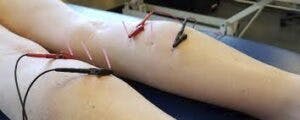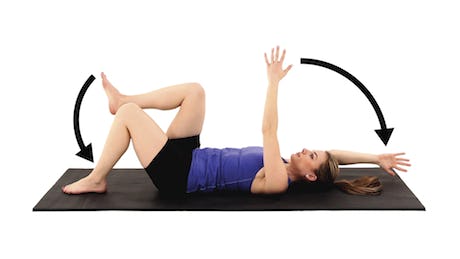What is the Rotator Cuff anyway?




What is the Rotator Cuff anyway?
Drew Faria, PT, DPT
The rotator cuff is a group of muscles that help to stabilize your shoulder. They attach to the top of the arm outside of where your biceps begin. This group of muscles are imperative for shoulder stability, reaching above your head, moving your arm in and out from your body, even getting dressed!
Unfortunately, this group of muscles is often extremely weak and prone to injury in the general population. Acute damage to the rotator cuff – often from a fall onto the shoulder – can cause serious pain, limitations in shoulder movement, and decreased ability to use your shoulder. However, decreased function can occur with poor conditioning of the shoulder over time. By some estimates, up to half of individuals with injury to this area are not even aware of it!
While it may be easy to experience dysfunction of the rotator cuff, it is even easier to get it into shape! By incorporating rotator cuff exercises into your daily routine, you can significantly reduce your risk of injury and improve your long-term shoulder function. In PT, we will often use exercises using rubber-band-like strips of tubing to work the rotator cuff into the motions it is responsible for directing. Here are four exercises you can try out today with one of these bands!
1. Standing external rotation of the shoulder – This will work the external rotators of the rotator cuff. Take a resistance band and anchor it around the inside of a doorknob. Stand to the side of the door, as the picture shows. Keep your elbow at a 90 deg angle and rotate your hand away from your body. Hold each one for 3 seconds, repeat it 20 times. The first few will be easy but try to complete these 20-30 reps and let me know how it feels!
2. Standing internal rotation of the shoulder – This will work the internal rotators of the shoulder. Internal rotation is essential for reaching behind your back. Anchor the band like the first exercise and turn yourself around to stand alongside the door to the other side. Keep the arm at a 90 deg angle and rotate your hand across your body. Again, hold for 3 seconds and repeat 20 times. If you have pain reaching up your back to grab your belt buckle, you might need some work on this motion!
3. Standing scaption – This will target the top of your rotator cuff – a muscle called the supraspinatus – which is probably the most common muscle that gets hurt! This muscle will also get pinched if you tend to hunch forward in a chair at an office desk, for instance. Keep your arms straight and lift them up out to the side with your arms positioned about 30 degrees away from the front. Lift to shoulder height, hold 3 seconds and repeat 30 times. Maintaining its strength is imperative to keeping the rest of the shoulder healthy.
4. Horizontal abduction – This is a 2-for-1 type exercise because you will also engage your rhomboids and trapezius muscles, which are key for upper back posture. If you slow down the movement pattern, you’ll notice that your shoulders need to rotate a bit the farther back you bring them. The farther your hands are from your body – generally – the more you will get the rotator cuff moving! Stand straight and hold the band in both hands directly out in front of you. Pull the band apart so the band comes across the chest. Hold 3 seconds and repeat 20 times.
Questions? Need more guidance on how to deal with that stubborn shoulder? Always follow up with your favorite Physical Therapist!












